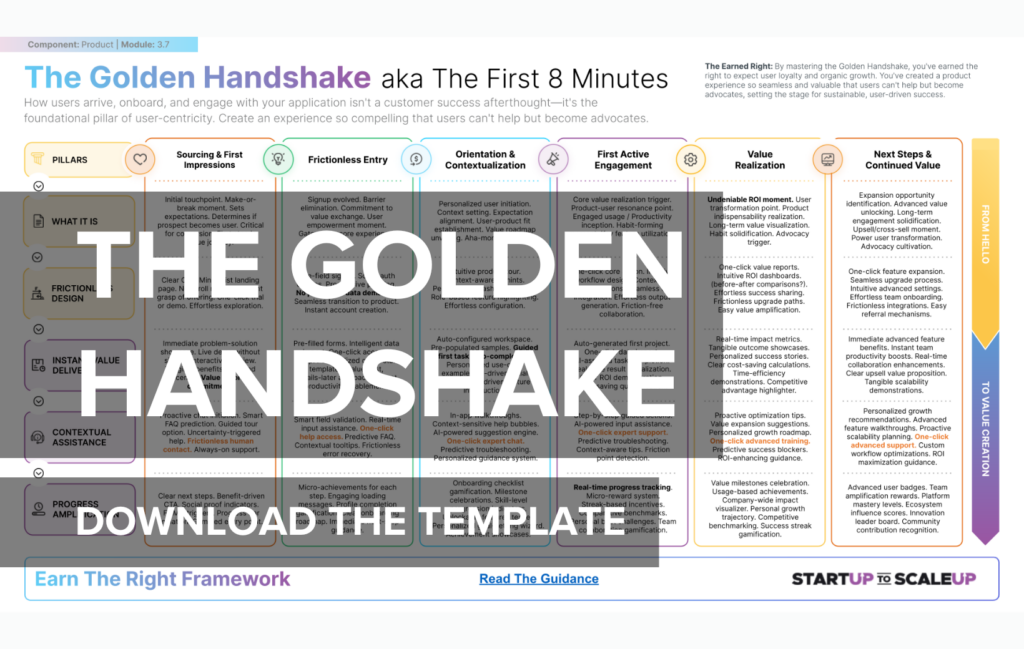How Can Startup Founders Create a Great User Experience?
Why is user experience crucial for startup success?
User experience (UX) is critical for startup success because:
- First impressions matter: A great UX can hook users from the start.
- Adoption rates: Intuitive design lowers barriers to product adoption.
- Customer retention: Positive experiences encourage continued use and loyalty.
- Word-of-mouth growth: Users are more likely to recommend products they enjoy using.
- Competitive advantage: Superior UX can differentiate you in crowded markets.
- Reduced support costs: Intuitive design can minimize the need for customer support.
- Increased lifetime value: Satisfied users are more likely to upgrade or expand usage.
In the startup world, where resources are limited, a great UX can be a cost-effective way to drive growth and retention.
What are the key components of a great user experience for startups?
Key components of great UX for startups include:
- Intuitive design: Clear, easy-to-navigate interfaces that require minimal learning.
- Fast onboarding: Quick time-to-value for new users.
- Personalization: Tailored experiences based on user preferences or behavior.
- Consistency: Uniform design and functionality across all touchpoints.
- Performance: Fast load times and smooth interactions.
- Accessibility: Design that accommodates users with different abilities.
- Feedback loops: Easy ways for users to provide input and see responses.
Focus on creating an experience that not only meets user needs but also delights them at every interaction.
How can startups create an effective onboarding process?
To create an effective onboarding process:
- Minimize friction: Reduce the steps required to start using the product.
- Provide clear guidance: Offer tooltips, tutorials, or guided tours for key features.
- Personalize the experience: Tailor onboarding based on user role or goals.
- Show, don’t tell: Use interactive demonstrations rather than lengthy explanations.
- Celebrate milestones: Acknowledge user progress to boost engagement.
- Enable quick wins: Help users achieve value as soon as possible.
- Gather feedback: Ask for input to improve the onboarding process continuously.
Remember, the goal of onboarding is not just to familiarize users with your product, but to help them achieve their goals quickly.
What metrics should startups track to measure user experience?
Key UX metrics for startups to track include:
- Time to value: How quickly users achieve their first meaningful outcome.
- User retention: The percentage of users who return over time.
- Task completion rate: How often users successfully complete key actions.
- Net Promoter Score (NPS): Likelihood of users recommending your product.
- User engagement: Frequency and depth of product usage.
- Error rates: How often users encounter issues or need support.
- Feature adoption: Which features are being used and how often.
Regularly analyze these metrics to identify areas for improvement and track the impact of UX changes.
How can founders balance feature development with user experience?
To balance feature development and UX:
- Prioritize based on user needs: Focus on features that solve core user problems.
- Implement gradual rollouts: Introduce new features incrementally to avoid overwhelming users.
- Maintain design consistency: Ensure new features align with existing design patterns.
- Conduct user testing: Test new features with real users before full rollout.
- Monitor feature usage: Track adoption of new features and be willing to remove underused ones.
- Simplify as you grow: Regularly audit your product to identify areas for simplification.
- Educate users: Provide clear, concise guidance on how to use new features.
Remember, a few well-designed, highly useful features often provide more value than a multitude of mediocre ones.
How can startups create “wow” moments in their user experience?
To create “wow” moments:
- Exceed expectations: Deliver more value than users anticipate.
- Personalize interactions: Use data to provide tailored experiences or recommendations.
- Anticipate needs: Proactively offer solutions before users realize they need them.
- Surprise and delight: Include unexpected, delightful features or interactions.
- Solve pain points: Address user frustrations in innovative ways.
- Celebrate user achievements: Acknowledge and reward user progress or milestones.
- Continually innovate: Regularly introduce new features or improvements that excite users.
The key is to deeply understand your users and consistently find ways to exceed their expectations.
What role does customer feedback play in improving user experience?
Customer feedback is crucial for UX improvement:
- Identifies pain points: Reveals areas where users struggle or feel frustrated.
- Validates assumptions: Helps confirm or disprove your UX hypotheses.
- Prioritizes improvements: Guides decisions on which areas to focus on first.
- Uncovers new opportunities: May reveal unexpected ways users want to use your product.
- Measures satisfaction: Helps gauge how well you’re meeting user needs over time.
- Builds loyalty: Shows users that their input is valued and acted upon.
- Informs iteration: Provides ongoing insights for continuous improvement.
Implement multiple channels for gathering feedback, from in-app surveys to user interviews, and create processes for acting on the insights gained.
Creating a great user experience is an ongoing process that requires deep user empathy, continuous iteration, and a commitment to excellence. Start by deeply understanding your users’ needs, pain points, and goals. Focus on creating an intuitive, frictionless experience that helps users achieve value quickly. Regularly gather and act on user feedback, and use data to inform your UX decisions. Remember, in the competitive startup landscape, a superior user experience can be a powerful differentiator.
By prioritizing UX from the start, you can create a product that not only meets user needs but also delights them, driving adoption, retention, and growth for your startup.
